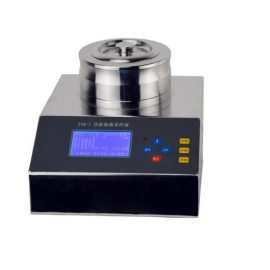
# Microbial Air Sampler: A Comprehensive Review of Applications and Advancements
## Introduction
Microbial air samplers are essential tools in environmental monitoring, healthcare, and industrial settings. These devices are designed to collect and quantify airborne microorganisms, providing critical data for assessing air quality and identifying potential health risks. This article explores the applications, advancements, and future prospects of microbial air samplers.
## Applications of Microbial Air Samplers
### Environmental Monitoring
Microbial air samplers play a crucial role in environmental monitoring. They are used to detect and quantify airborne pathogens, allergens, and other microorganisms in various environments, including urban areas, forests, and agricultural fields. This data helps in understanding the spread of diseases and the impact of environmental changes on microbial populations.
### Healthcare Settings
In healthcare facilities, microbial air samplers are employed to monitor air quality and prevent the spread of infections. They are particularly useful in operating rooms, intensive care units, and isolation wards, where maintaining sterile conditions is paramount. By identifying and quantifying airborne pathogens, these devices help in implementing effective infection control measures.
### Industrial Applications
Industries such as pharmaceuticals, food processing, and biotechnology rely on microbial air samplers to ensure product safety and compliance with regulatory standards. These devices are used to monitor cleanrooms, production areas, and storage facilities, ensuring that airborne contaminants are kept to a minimum.
## Advancements in Microbial Air Sampler Technology
### Improved Sensitivity and Accuracy
Recent advancements in microbial air sampler technology have led to devices with improved sensitivity and accuracy. Modern samplers can detect lower concentrations of microorganisms and provide more precise measurements, enhancing their reliability in various applications.
### Automation and Data Integration
Automation has revolutionized microbial air sampling. Automated samplers can operate continuously, collecting data over extended periods without human intervention. Additionally, integration with data management systems allows for real-time monitoring and analysis, facilitating quicker decision-making and response.
### Portable and User-Friendly Designs
The development of portable and user-friendly microbial air samplers has expanded their use in field studies and remote locations. These devices are lightweight, easy to operate, and often battery-powered, making them ideal for on-site monitoring and rapid deployment in emergency situations.
## Future Prospects
The future of microbial air samplers looks promising, with ongoing research focused on enhancing their capabilities. Emerging technologies such as biosensors and nanotechnology are expected to further improve the sensitivity, specificity, and efficiency of these devices. Additionally, the integration of artificial intelligence and machine learning could enable predictive analytics, providing early warnings of potential outbreaks and environmental hazards.
## Conclusion
Microbial air samplers are indispensable tools in various fields, offering valuable insights into airborne microorganisms and their impact on health and the environment. With continuous advancements in technology, these devices are becoming more accurate, efficient, and user-friendly, paving the way for broader applications and improved public health outcomes.
Keyword: Microbial Air Sampler
